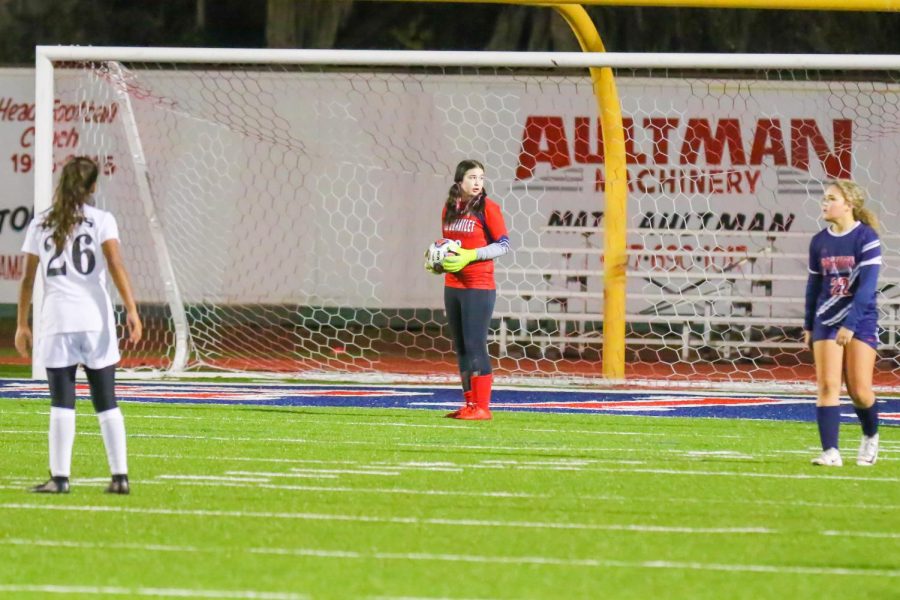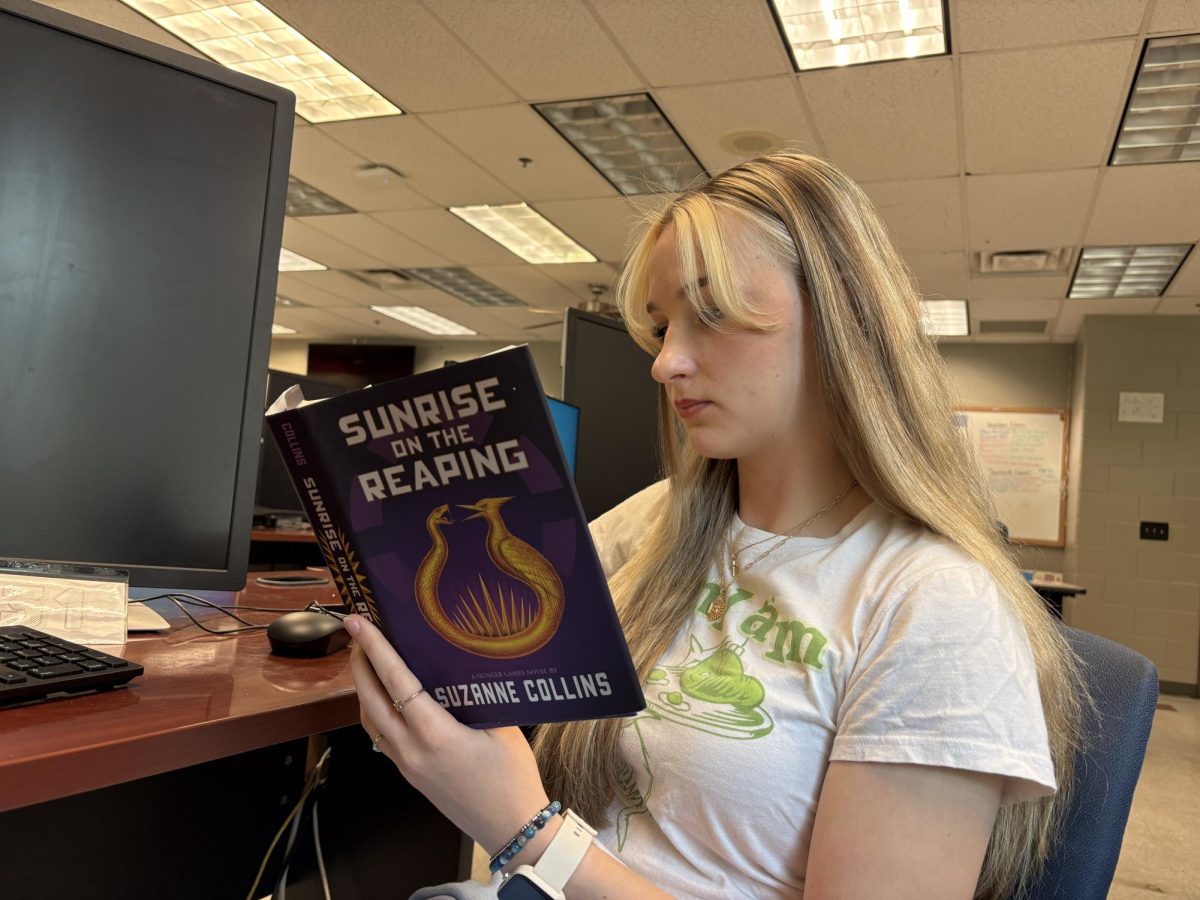Narcolepsy on the soccer field
Photo provided by: Provided by: Lindsey Follesse
Junior Lindsey Follesse serves as goalie during a JV soccer game. Follesse has a neurological condition called Narcolepsy. “Having an attack before a soccer practice or game is very draining because the disorder is not a controllable thing and it happens at any given time,” Follesse said. “I can miss going to practice or be late to a game.”
March 30, 2021
A soccer ball is coming down the field at full speed. Behind the ball, a running JV soccer player. She brings her leg up to make a shot. Players hear someone yell, “Keep!” and they see junior Lindsey Follesse catch the ball. But they never worry about her, they just worry about the shots she will stop.
“My condition is Narcolepsy,” Follesse said. “I was completely devastated when I found out because not only was it in the middle of my soccer season, but it was when I first started driving. I lost my permit and the ability to be left alone.”
Anywhere from 135,000 to 200,000 people in the US suffer from narcolepsy, but only around 25% of people get treated according to Narcolepsy Network.
“It might be known more as a sleeping disorder but when I fall asleep, it isn’t peaceful,” Follesse said. “I am fully aware of who is around me and who is talking.”
Symptoms of narcolepsy include, but are not limited to excessive daytime sleepiness, sleep attacks, cataplexy (weakening of muscles without warning), sleep paralysis, hallucinations, and disrupted nighttime sleep according to Narcolepsy Network.
“Good days for me are rare but they feel really good because I can get more done when I’m not passed out on the floor somewhere,” Follesse said. “Having an attack before a soccer practice or game is very draining because the disorder is not a controllable thing and it happens at any given time.”
Katherine Jucker, the coach of the girls’ JV soccer team stated that Follesse did an amazing job this season and communicated her needs to Jucker.
“I was concerned for her well-being and those around her,” Jucker said. “I didn’t change anything. I just wanted to make sure she felt comfortable and as long as she told me when she wasn’t feeling well, everything was good.”
Over the years, students with disorders, mental health, disabilities, have a decrease in how they see themselves positively, how others view them.
“I believe people do treat me differently, only once they personally see what happens and the effects of not knowing if I’m still alive or what to do when it happens,” Follesse said. “One must walk in someone else’s shoes before knowing how to act and treat me.”
Kevin Szewczyk, a business teacher and offense football coach, had a son who had epilepsy. He explained that it was difficult for him as a parent and coach to allow his son to play football.
“That was a scary time when we found out it was epilepsy,” Szewczyk said. “We thought he was clumsy. He was around six or seven when he was diagnosed. He didn’t want to play [football] at first because his aunt and grandma scared him, saying he was going to get hurt. He fell in love with the game and when he was taken off his meds, he grew to 6’4 and weighed 265 pounds. [He] started his senior year at nose guard and got recruited by a division II school in Tennessee.
It is estimated that over 90 percent of children with epilepsy will grow out of it by age 12 according to the Epilepsy Society.
“He is now 23 and working on his graduate degree in Sports Management.” Szewczyk said. He has been seizure free since he was 16 and [he is] very active. He earned a graduate assistant job at his university in the sports communication department. There is always the thought that they may return. The doctors said that with juvenile epilepsy, there is a 99% chance that it won’t return so we don’t really think about it returning.”





